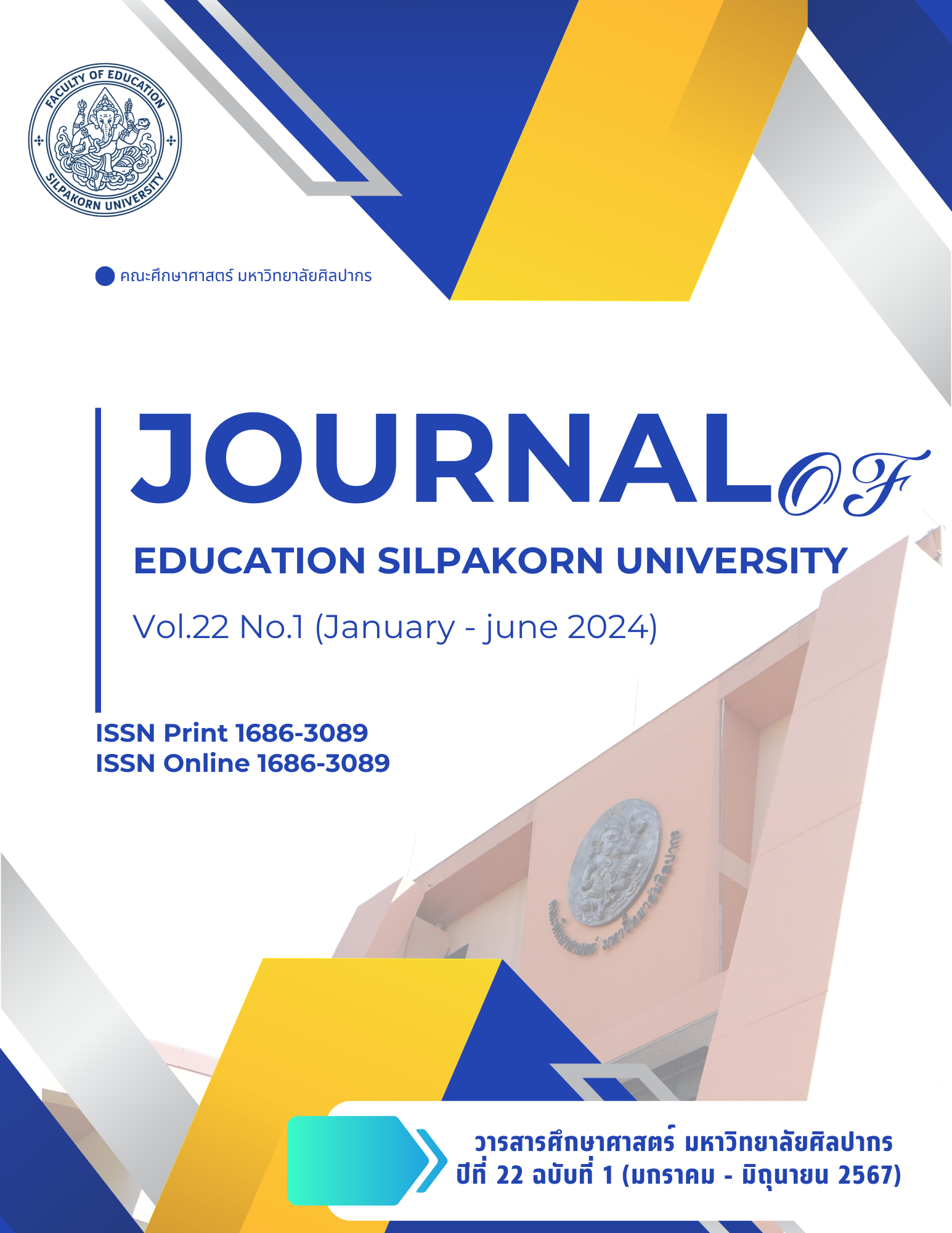Application of Linguistic Theories to Promote the Teaching of English Reading Comprehension Skills
Main Article Content
Abstract
Abstract
Reading comprehension is a foundational skill essential for academic success and lifelong learning. This academic article explores the application of linguistic theories to enhance reading comprehension, focusing on syntactic, and morphological aspects. Drawing on insights from prominent scholars, it discusses the processes involved in reading comprehension and present pedagogical implications to teach this skill effectively. Understanding the fundamental concepts of linguistic theory, such as syntax, morphology, and semantics is crucial for teachers aiming to empower students with the tools necessary to decode and extract meaning from written texts effectively.
Article Details

This work is licensed under a Creative Commons Attribution-NonCommercial-NoDerivatives 4.0 International License.
References
Adams, M. J. (1990). "Beginning to read: Thinking and learning about print." MIT Press.
Apel, K., & Lawrence, J. (2011). "Contributions of morphological awareness skills to word-level reading and
spelling in first-grade children with and without speech sound disorder." Journal of Speech, Language,
and Hearing Research, 54(5), 1312-1327.
Bear, D. R., Invernizzi, M., Templeton, S., & Johnston, F. (2000). "Words their way: Word study for phonics,
vocabulary, and spelling instruction." Prentice Hall.
Beck, I. L., & McKeown, M. G. (1986). "Vocabulary and comprehension: Two sides of the same coin."
Educational Researcher, 15(6), 9-13.
Birsh, B. R. (2005). "Multisensory Teaching of Basic Language Skills." Paul H Brookes Pub.
Carlisle, J. F. (2000). "Awareness of the structure and meaning of morphologically complex words: Impact on
reading." Reading and Writing, 12(3-4), 169-190.
________. (2003). "Morphology matters in learning to read: A commentary." Reading Psychology, 24(3-4), 291-
Carlson, G. R. (1986). Meaning, context, and the interpretation of ambiguity. Cognitive Science, 10(2), 121-172.
Carrell, P. L., Devine, J., & Eskey, D. E. (Eds.) 1988. Interactive approaches to second language reading.
Cambridge: Cambridge University Press.
Carrell, P. L., & Eisterhold, J. C. 1988. Schema theory and ESL reading pedagogy. In. P. L. Carrell, J. Devine, &
D. E. Eskey (Eds.), Interactive approaches to second language reading (pp. 73-92). Cambridge:
Cambridge University Press.
Chomsky, N. (1957). "Syntactic Structures." Mouton.
Clark, H. H. (1973). The language-as-fixed-effect fallacy: A critique of language statistics in psychological
research. Journal of Verbal Learning and Verbal Behavior, 12(4), 335-359.
Cruse, D. A. (1986). Lexical semantics. Cambridge University Press.
Dubin, F., & Bycina, D. 1991. Academic reading and the ESL/EFL teacher. In M. Celce-Murcia (Ed.), Teaching
English as a second or foreign language (2nd ed.) (pp. 195-215). Boston: Heinle & Heinle.
Frazier, L., & Rayner, K. (1982). "Making and correcting errors during sentence comprehension: Eye movements
in the analysis of structurally ambiguous sentences." Cognitive Psychology, 14(2), 178-210.
Fodor, J. D., & Garrett, M. F. (1967). "Some syntactic determinants of sentential complexity." Perception &
Psychophysics, 2(5), 289-296.
Fodor, J. A., & Katz, J. J. (1963). The structure of language: Readings in the philosophy of language. Prentice-
Hall.
Gibbs Jr, R. W. (1994). The Poetics of Mind: Figurative Thought, Language, and Understanding. Cambridge
University Press.
Gibson, E. (1998). "Linguistic complexity: Locality of syntactic dependencies." Cognition, 68(1), 1-76.
Graesser, A. C., & McNamara, D. S. (2011). "Computational Analyses of Multilevel Discourse Comprehension."
Topics in Cognitive Science, 3(2), 371-398.
Graesser, A. C., McNamara, D. S., Louwerse, M. M., & Cai, Z. (2005). "Coh-Metrix: Analysis of text on
cohesion and language." Behavior Research Methods, 37(4), 505-517.
Green, G. M. (1976). Towards a theory of reading comprehension: The interaction of lexical and contextual
variables. Memory & Cognition, 4(2), 214-226.
Greenbaum, S., & Quirk, R. (1990). "A Student's Grammar of the English Language." Longman.
Grice, H. P. (1975). Logic and conversation. In P. Cole & J. L. Morgan (Eds.), Syntax and Semantics 3: Speech
Acts (pp. 41-58). Academic Press.
Harmer, J. (2001). The practice of English language teaching (3rd ed.). Essex: Pearson Education.
Henry, M. K. (2003). "Unlocking literacy: Effective decoding and spelling instruction." Brookes Publishing
Company.
Just, M. A., & Carpenter, P. A. (1980). "A theory of reading: From eye fixations to comprehension."
Psychological Review, 87(4), 329-354.
Kintsch, W. (1988). The role of knowledge in discourse comprehension: A construction-integration model.
Psychological Review, 95(2), 163-182.
________. (1998). "Comprehension: A Paradigm for Cognition." Cambridge University Press.
Kolln, M. J., & Funk, R. (2008). "Understanding English Grammar." Pearson.
Kreuz, R. J., & Roberts, R. M. (1995). A probabilistic analysis of the relationships among meanings of an
ambiguous word. Journal of Memory and Language, 34(1), 133-145.
Kuo, L. J., & Anderson, R. C. (2006). "Effects of early vocabulary growth on subsequent reading achievement."
Journal of Educational Psychology, 98(4), 853-869.
McKoon, G., & Ratcliff, R. (1986). "Inference during reading." Psychological Review, 93(4), 394-411.
McRae, K., & Jones, M. N. (2013). Semantic memory. In The Oxford Handbook of Cognitive Psychology (pp.
-153). Oxford University Press.
Nagy, W. E., Anderson, R. C., & Herman, P. A. (1987). "Learning word meanings from context during normal
reading." American Educational Research Journal, 24(2), 237-270.
Nagy, W. E., & Scott, J. D. (2000). "Vocabulary processes." In Handbook of Reading Research (Vol. 3, pp. 269-
. Routledge.
Schank, R. C., & Abelson, R. P. (1977). Scripts, plans, goals, and understanding: An inquiry into human
knowledge structures. Lawrence Erlbaum Associates.
Silberstein, S. (1987). Let s take another look at reading: Twenty-five years of reading instruction. Language
Teaching Forum, 25(4): 18-35.
Snow, C. E., & Sweet, A. P. (2003). "Reading for comprehension." In A. P. Sweet & C. E. Snow (Eds.),
Rethinking reading comprehension (pp. 1-27). Guilford Press.
Sperber, D., & Wilson, D. (1986). Relevance: Communication and cognition. Blackwell.
Templeton, S. (2020). "Teaching and Learning English Spelling: A Research-Based Approach." Routledge.
Tierney, R. J., & Readence, J. E. (2000). "Reading Strategies and Practices: A Compendium." Pearson.
VanPatten, B., & Williams, J. (2015). "Theories in Second Language Acquisition: An Introduction." Routledge.


